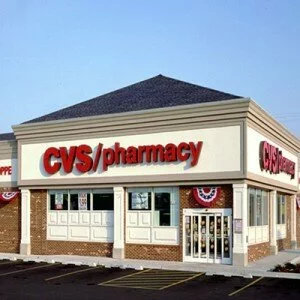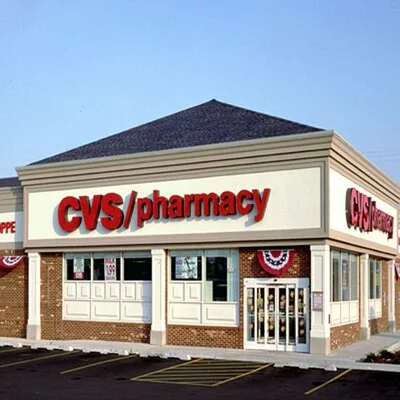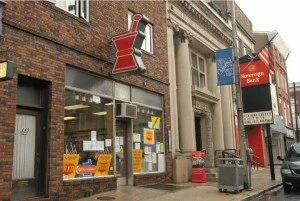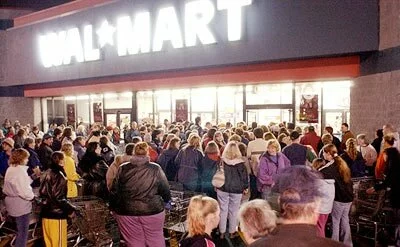
As readers of this blog know, we’ve been following the battle between Wal-Mart and pharmacy benefit managers (PBMs) with interest over the past couple of months. To me, it’s a superb business story that just isn’t getting the coverage it deserves. Already, we’ve seen lots of intrigue and strategy on display; it’s like a great chess match.
Not only that, but all of those who receive prescription drug benefits through their employers will be affected by the outcome of this fight.
Here’s a quick overview of what’s happened so far:
1. Wal-Mart introduced its $4 generic drug program and has hyped it heavily, increasing the retailer’s power to influence the retail drug market.
2. PBMs like Express Scripts and MedCo Health Services, which manage employer-based drug coverage for the major health insurers, have been pushing the mail-order option on employers. This gives the PBM control over the drug distribution process — including what pharmacy fills the prescription, the price it charges, and the profit the PBM collects. The retailer is cut out of the loop.
3. Express Scripts upped in ante in the brewing battle in March by unveiling Select Home Delivery, an employer plan that automatically enrolls employees in the mail-order program unless they specifically opt out of it. This makes mail order the default option.
4. Wal-Mart, realizing that PBMs are threatening to cut it out of the market with this mail-order end-around, responded with the bold move of approaching major employers directly. Under a pilot program being tried out by Caterpillar and other employers, Wal-Mart waives the $5 co-payment for generic drugs for employees when they buy their medication at Wal-Mart or Sam’s Club pharmacies.
Which brings us to where we currently are in the story. As you might expect, the PBMs have not responded pleasantly to Wal-Mart’s invasion of their turf. As one PBM rep, Maria C. Palumbo of Express Scripts, told the Wall Street Journal:
While our business model focuses on improving health outcomes while reducing wasteful spending, Wal-Mart’s program appears to be designed to build store traffic.
Ouch.
That was in the Journal yesterday.
You know what happened today? The AP reported that Wal-Mart will test a mail-order version of its drug program — a direct alternative to the PBMs. According to the report:
Wal-Mart says it is expanding its discount prescription drug program, testing a program that will allow customers to get 90-day supplies of generic prescription drugs through the mail for as little as $10…
Wal-Mart said its program will have no membership or enrollment fees. Customers will be able to get any of 300 common prescriptions for $10 per 90-day order, and will be able to get more than 3,000 other prescriptions, both brand-name and generic, for higher prices.
Do you see where this is going? Let me spell out what I think will come next:
Wal-Mart will offer its drug program to employers nationwide, delivering lower prices than PBMs and giving employees more choices — by allowing them to buy their drugs either in store or by mail.
The PBMs will say, “Crap, Wal-Mart just kicked out butts!”
Then, they will scramble to save themselves by cutting some kind of partnership or preferred distribution deal with Wal-Mart.
Lesson: Don’t mess with Wal-Mart.

Rite Aid is a $24 billion company operating more than 5,000 drugstores in 31 states, making it the third-largest pharmacy chain in the United States. But unless this overpriced retailer receives some bailout money from heaven (’cause it’s sure not coming from Washington), the year 2009 may be its last.
Motley Fool has just put it on its list of 15 companies that might not survive the year. Says the Fool:
Rite Aid. (Ticker symbol: RAD; about 100,000 employees; 1-year stock-price decline: 92%). This drugstore chain tried to boost its performance by acquiring competitors Brooks and Eckerd in 2007. But there have been some nasty side effects, like a huge debt load that makes it the most leveraged drugstore chain in the U.S., according to Zacks Equity Research. That big retail investment came just as megadiscounter Wal-Mart was starting to sell prescription drugs, and consumers were starting to cut bank on spending. Management has twice lowered its outlook for 2009. Prognosis: Mounting losses, with no turnaround in sight.
Rite Aid’s story, full of waste and mismanagement, is a classic illustration of why Americans save so much money through online and mail-order pharmacies. Whether these pharmacies are based in the United States or Canada, they require a fraction of the overhead of a big chain pharmacy — particularly one as poorly run as Rite Aid.
Rite Aid has been in trouble as far back as 1999, when it was busted by the news media (and investigated by state regulators) for questionable business practices like selling date-sensitive products well past their due dates. Rite Aid also had a doozy of an accounting scandal that led to jail time for several top ranking execs, including CEO Martin Grass.
Like many bloated Fortune 500 corporations, Rite Aid tried to put lipstick on the pig by acquiring competitors like Eckerd. It’s a quick way to boost your top line to impress your stockholders without actually doing anything intelligent to help your customers. Rite Aid went deeply into debt in the process, and now they’re on death’s door.
In addition to its own incompetence, Rite Aid has been hurt badly by the trend toward mail-order pharmacies and by Wal-Mart’s $4 prescription drug plan, which savvier retailers (including finally CVS late last year) have copied.
In its own backward way, Rite Aid has been trying to catch up with its lower-cost competitors, but it’s almost undoubtedly too little, too late.
Rite Aid does frequently offer short-term promotions for consumers who transfer their prescriptions (for example, If you transfer two prescriptions to Rite Aid, you receive a $25 gift card for each @ a $50 value.) However, their Rx Savings Card only entitles you to an $8.99 price for select generics — more than twice as much as Wal-mart and many others now charge.
That’s the best you’ve got? Good luck with that, Rite Aid. We’ll see you in the business obituary section.
A North Dakota news site reports that drug prices are under the microscope in the state as legislators consider repealing a law that prevents most chain pharmacies from competing there. The law requires pharmacies to be majority-owned by North Dakota licensed pharmacists.
Supporters of repeal argue that allowing the big retailers to offer prescription drugs will encourage price competition and result in lower costs for consumers. To test this, The Forum of Fargo-Moorhead “took the five most common prescription drugs in North Dakota and compared their prices at four area pharmacies — two in North Dakota and two in Minnesota.”
The results showed that North Dakotans weren’t paying more for these drugs than Minnesotans, after all. However, there was something striking about the survey. It revealed huge, seemingly random variation in pricing for top-selling drugs. The location of the pharmacy was not a factor in these variations.
For example, some pharmacies in both states sold the cholesterol drug Simvastatin (Simvastatin 20mg, 30 count) for less than $20, whereas a North Dakota CVS was selling the same medication (same dosage, same quantity) for $54.59.
The reality is that large chains can help with the prices of some generics — the Wal-Mart $4 drug program has been matched by an increasing number of competitors — but there is still little real price competition for the vast majority of prescription drugs, whether or not national chains are part of the mix.
There are two main reasons for this:
- Pharmaceutical companies have patents that give them virtual monopolies on the sale of brand-name drugs in the United States, allowing them to charge distributors whatever they wish.
- Pharmacies are not transparent in sharing their prices on most drugs with consumers — meaning it is difficult to comparison shop, a fact that results in inefficient, inflated pricing.
For both these reasons, eDrugSearch.com is the better option — particularly for the tens of millions of Americans without health insurance.
As Wal-Mart has taken the lead in lowering prices on generic drugs among brick-and-mortar retailers, the major drug chains have been slow to respond. Walgreens came around first, and now CVS has finally responded — with a $9.99 price point on a 90-day supply of about 400 different medications starting later this month.
Despite the fact that CVS is a day late and dollar short on reducing prices on generics, its announcement got some surprisingly high-profile media coverage from the likes of the Dallas Morning News and the Los Angeles Times. Why, you might wonder? Because of an added gimmick that won’t do much for healthcare consumers — but that has obviously been good for PR.
The gimmick? To “bundle its program with medical care from its in-store clinics.”
Sounds great — till you realize what this “bundle” consists of. You pay $10 per year for a CVS Health Savings Pass, and you get the lower generic drug price and a 10 percent discount at CVS MinuteClinics.
Ten whole percent? Consider our healthcare crisis solved.
Of course, the tens of millions of Americans who are struggling to pay their prescription drug bills each month know that the problem has never been low-cost generics, but drugs that aren’t among the 400 on the lists of Wal-Mart, Target, Walgreens, Kroger or CVS. The drugs that bust family budgets aren’t on anybody’s list.
And paying a little less for a visit with a nurse in the back corner of a drugstore will do little to ease that pain.
One of the biggest advantages of shopping for prescription drugs online is price transparency, which empowers the consumer to easily find the best price among available options.
As healthcare consumers well know, it is very difficult to comparison shop among brick-and-mortar pharmacies, because pharmacies typically don’t advertise their prices for prescription drugs (with the exception of the Wal-Mart generic drug program and similar programs, which generally include a list of covered drugs on the retailer’s Web site.)
Because it’s difficult to compare prices, particularly for expensive, brand-name drugs, most consumers buy at their corner drugstore, assuming the price isn’t much different from the next corner — or the other side of town. This simply isn’t the case. What’s worse, the disparities in pricing disproportionately affect poorer people.
According to a new study appearing in the Health Services Research journal:
Four of the most widely prescribed drugs in the United States can cost 15 percent more on average in the poorest neighborhoods of Florida, according to a study comparing retail pharmacy prices around the state. Part of the explanation is the high proportion of independent pharmacies in poor ZIP codes that charge the highest prices for Nexium, Advair Diskus, Plavix and azithromycin…
In contrast, the study shows that chain pharmacies are less expensive and less likely to vary their prices based on ZIP code. However, they are also less common in poorer areas. The authors noted that some independent pharmacies in poor neighborhoods did charge prices similar to chain pharmacies, but that issues such as health literacy, finances and transportation could limit consumers from shopping around…
Even small price increases have negative consequences, and two earlier studies found that the cost of prescription drugs discourages uninsured and poor people from filling their prescriptions. As a result of not controlling their health, they spend more time in emergency rooms.
The researcher behind the study concludes:
“Insuring the uninsured is a priority. However, uninsured people who pay retail prices for their medications and struggle with health care costs should not face higher prices because of where they live. Even though these variations are based on data from only one state, they deserve further investigation.”
-
 Subscribe in a reader
Subscribe in a reader -
Search Blog Posts
-
Ads

-
-
How to Safely Buy Prescription Drugs Online from Cary Byrd on Vimeo.
-
Medi-Share: Christian Health Insurance Alternative
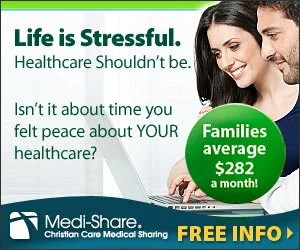
-
Archives
-
Our Healthcare100 Ranking
-
Tags
adverse drug reactions big pharma buy drugs online Canadian drugs canadian pharmacies canadian pharmacy compare drug prices consumer reports divine healing Drug costs Drug interactions Drug Prices drug safety tips drug savings tips dtc advertising eDrugSearch.com FDA healing scriptures Health 2.0 healthcare100 Healthcare blogs high drug costs high drug prices Jehova Rophe Jesus Christ licensed Canadian pharmacies licensed online pharmacies Lipitor mail order pharmacies medicare coverage gap medicare doughnut hole Medi Share miracles online pharmacies online pharmacy safety personal drug importation pharmacy spam prescription drug abuse Prescription drugs reimportation rogue online pharmacies save money on prescriptions The Great Physician The Lord our Healer Wal-Mart $4 generic drug program
